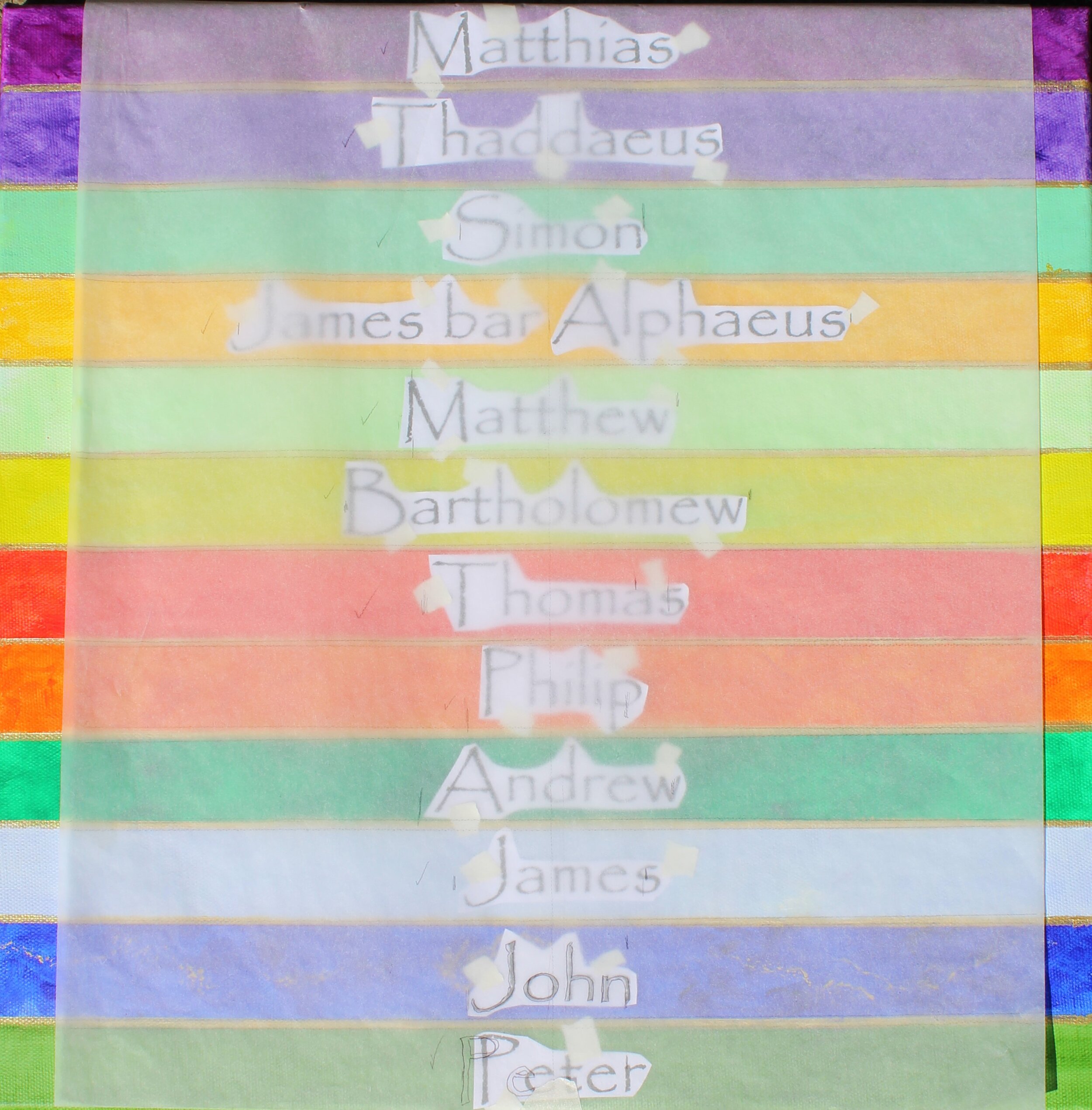More layers of light! More layers to represent the many facets of light, but also because more layers give depth and keep the eye looking for longer. How to make another luminous layer, especially since I’ve chosen a limited palette of yellow, white, and gold for this painting? First, there is more than one colour of yellow and of white—even of gold, and tints of each (adding various amounts of white). Good. But this painting of God’s own glorious light needed more.
Acrylic paint on Mylar sheet awaiting transfer to a canvas
I studied printmaking in college; I’ve loved it since learning to make linocut prints in school when I was twelve. I enjoy combining art techniques, particularly adding printing to my collages and paintings. The idea for the next layer came in a flash; that Mylar wrapping (thin, transparent and flexible but still a bit stiff, plastic) that I had saved from one of my orchid plants would work to print a layer of paint. We artists think nearly everything will either help make art or be art! I cut a piece the size of the area I wanted the layer to cover and squirted yellow (cadmium hue) acrylic paint in a starburst pattern. It did look a bit like mustard.
Transferring acrylic paint from Mylar sheet to canvas
Fortunately, the paint is thick enough that I could reverse the Mylar without dripping. Using a favourite printmaking tool--a bamboo rice spoon, I rubbed the dry side of the reversed Mylar—transferring the paint to the canvas. Then I lifted it to see if the results were what I wanted. Definitely! However, the paint was too thick for the layer, so I had to carefully lift the excess with a brush and search for other paintings-in-process that could benefit from some cad yellow paint. No paint wasted!
The finished layer of “light”
More layers to come!





